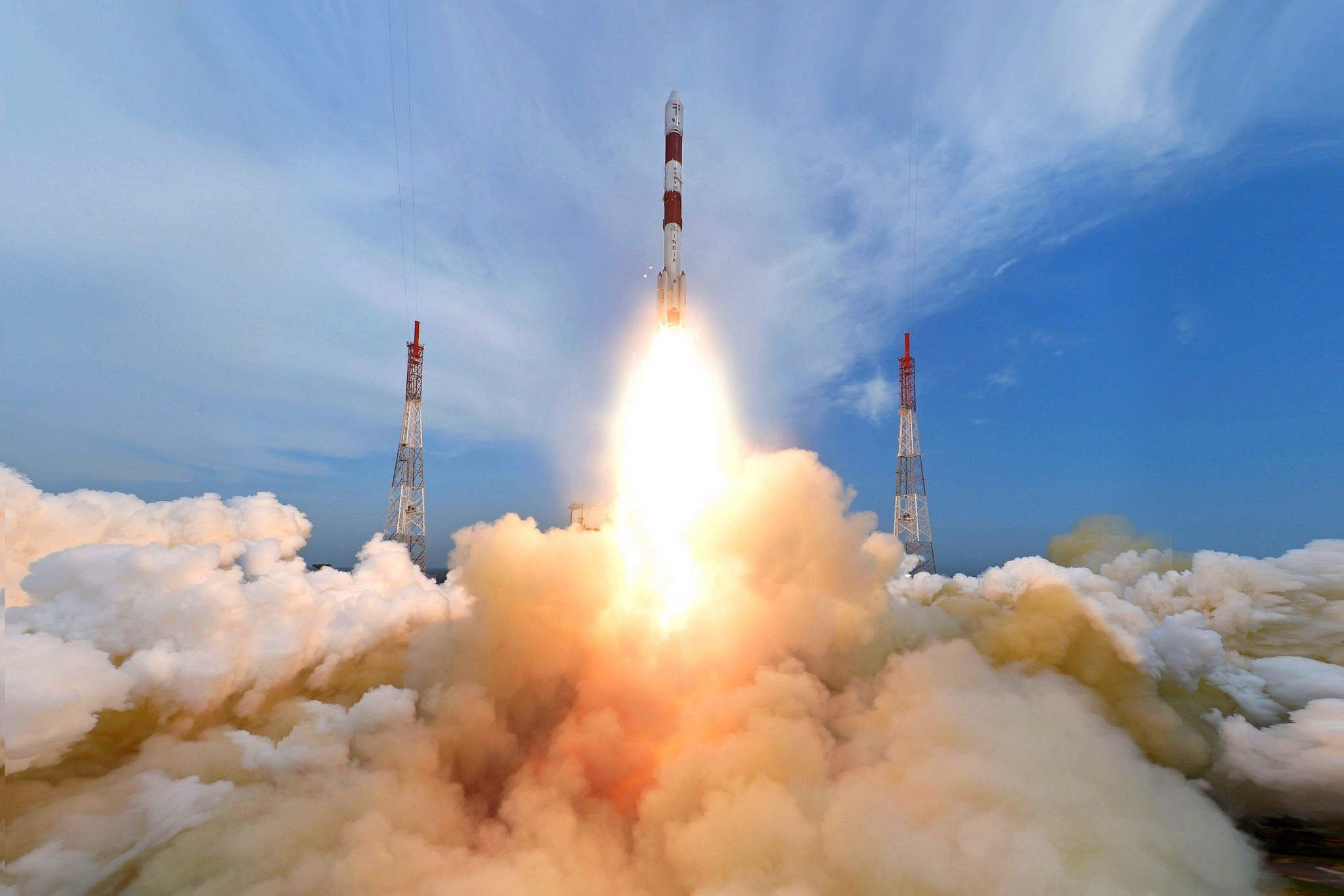Insta
China Eyes Growing Satellite Launch Market, Unveils New Rockets To Compete With India

PSLV Rocket launch (Representative Image) (Pic Via ISRO)
In a bid to tap into the growing satellite launch market, China recently unveiled small space rockets to give competition to India, which is one of the dominant provider of the space launch services in Asia, reports Times Of India.
According to the report, China Rocket, the commercial space wing of rocket-maker China Academy of Launch Vehicle Technology, on 20 October unveiled a range of solid-fuelled rockets codenamed ‘Smart Dragon’ (SD) and a few days later unveiled its liquid-propellant rocket Tenglong.
The rockets designed to carry range of payloads, however, will be making their debut launches in the next two years.
The development comes as India is gearing up for the test-launch of its small satellite launch vehicle (SSLV) by the end of 2019. The SSLV has been specifically developed for comercial satellite launches. It has been booked by a US Satellite customer much before it s debut. The SSLV cab be assembled in just 3-5 days compared to 30-40 days for a normal-sized rocket.
The Chinese SD rocket family comprises SD-1, SD-2 and SD-3 rockets with 200 kg, 500 kg and 1.5 tonne lifting capability respectively. The SD-1 rocket completed its maiden flight on 17 August while the SD-2 and SD-3 are scheduled for their maiden launches in 2020 and 2021. The liquid-propellant utilizing Tenglong will make its debut flight in 2021.
Though, the rockets are designed for carrying a range of payloads but competing with PSLV will not be easy for the Chinese company as ISRO has already gained its foothold in the launch market. Over 290 satellites have been launched by ISRO using its PSLV platform, which holds the record for placing 104 satellites in their respective orbits in a single flight.
Support Swarajya's 50 Ground Reports Project & Sponsor A Story
Every general election Swarajya does a 50 ground reports project.
Aimed only at serious readers and those who appreciate the nuances of political undercurrents, the project provides a sense of India's electoral landscape. As you know, these reports are produced after considerable investment of travel, time and effort on the ground.
This time too we've kicked off the project in style and have covered over 30 constituencies already. If you're someone who appreciates such work and have enjoyed our coverage please consider sponsoring a ground report for just Rs 2999 to Rs 19,999 - it goes a long way in helping us produce more quality reportage.
You can also back this project by becoming a subscriber for as little as Rs 999 - so do click on this links and choose a plan that suits you and back us.
Click below to contribute.
Latest